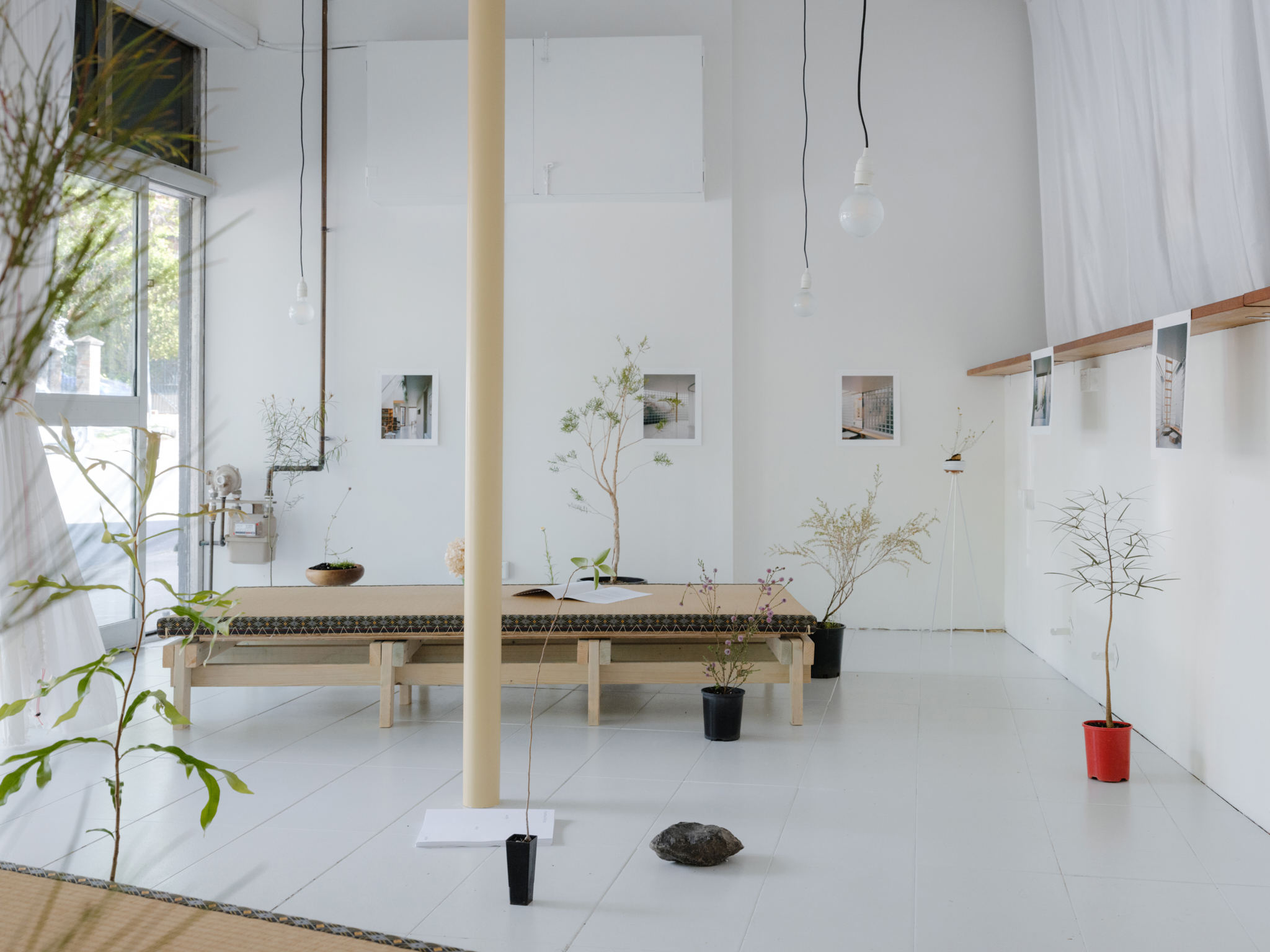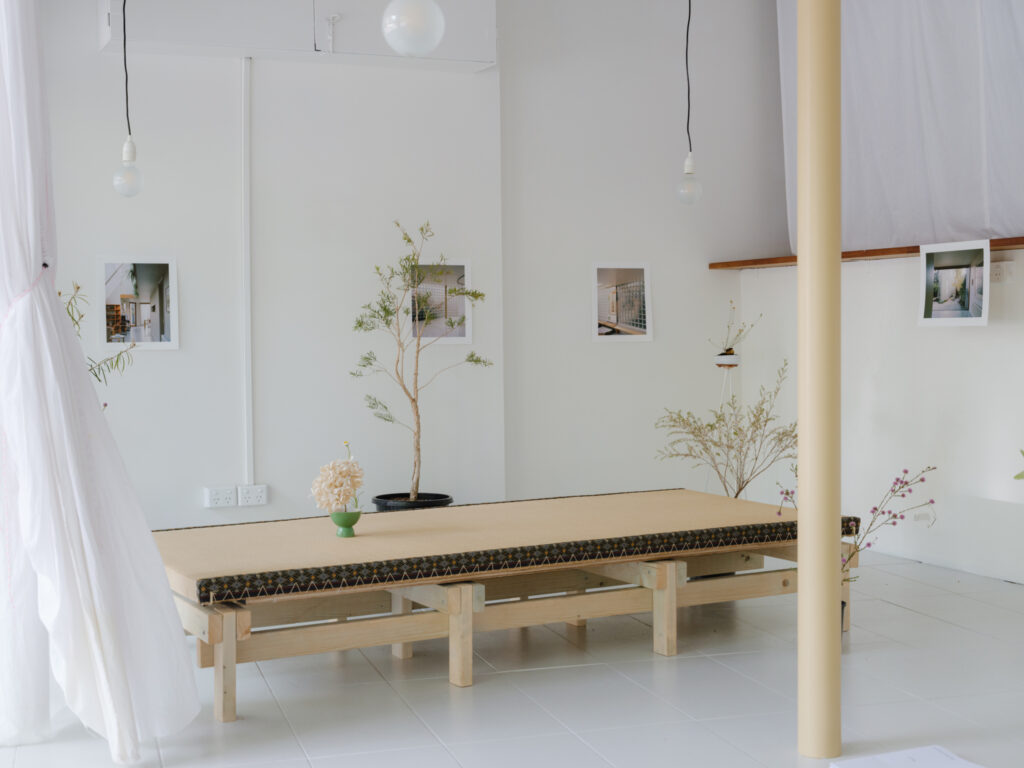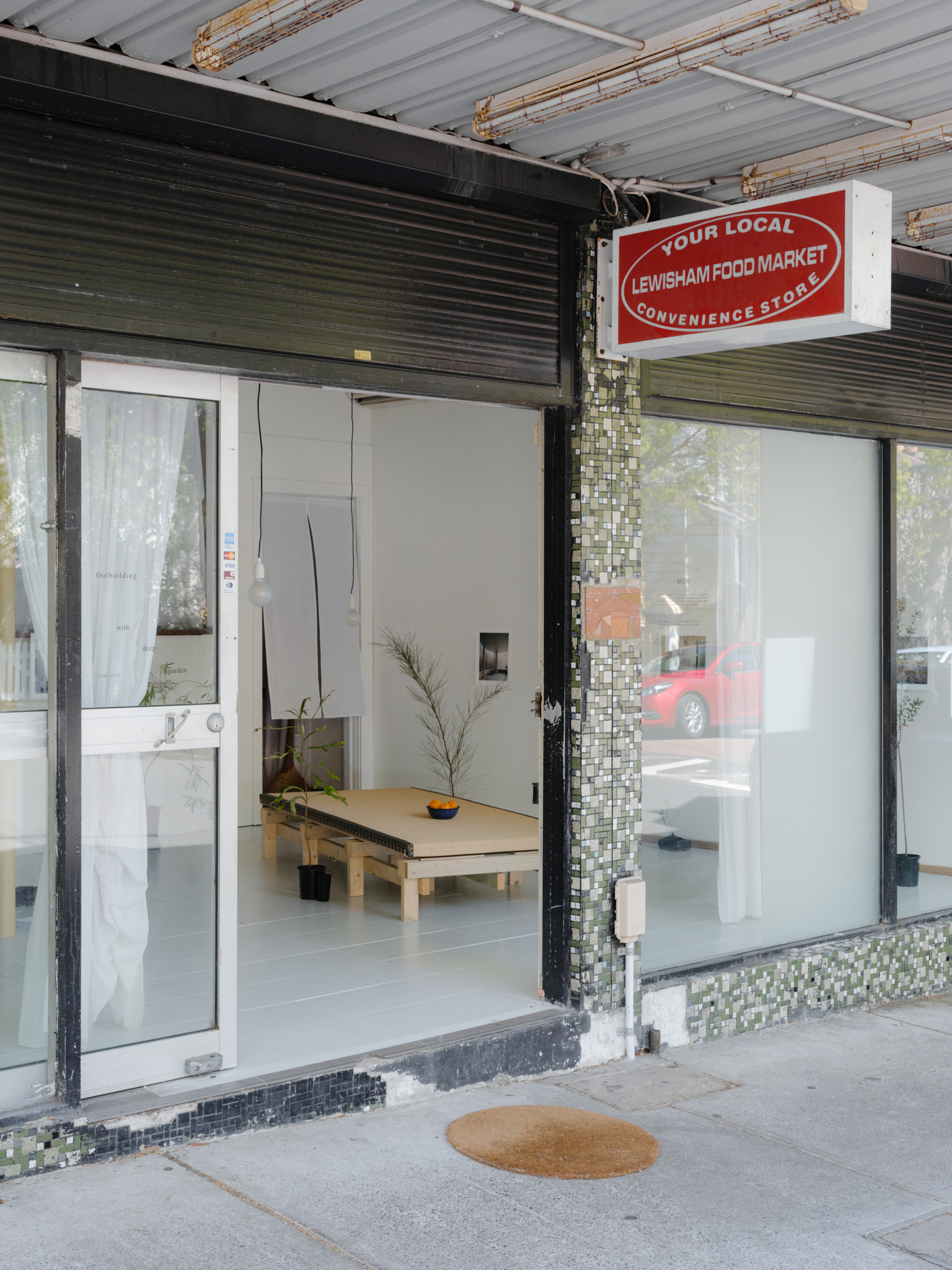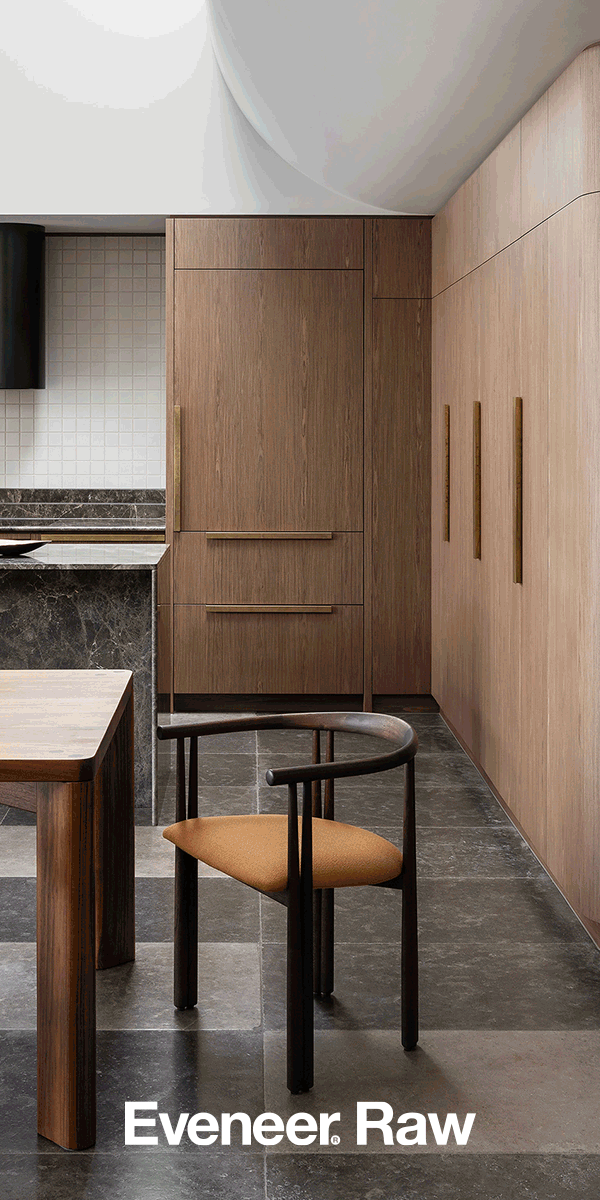Interview by Sophie Lanigan. Special thanks to SJB Director Ljiljana Gazevic
Notes On ‘Outbuilding with deep garden’
A positive review of Rory Gardiner's photographic exhibition showcasing a project by the Melbourne-based architects, Baracco + Wright.
Essay
Felix McNamara
Photography
Hamish McIntosh

Outbuilding with deep garden was an exhibition at Mori, Lewisham (Sydney), from 23 September to 23 October, 2023. The exhibition included photographs by Rory Gardiner of a project (the exhibition’s eponym) by Melbourne-based architects Baracco + Wright. Alongside the photographs, the room contained plants, pots, display devices, seating, a column, lights, mandarins, more plants, curtains, and a publication centred on textual reflections of the exhibition and meta-referential drawings—plans drawn not for functional navigation but for architectural perception. The curation and exhibition design for Outbuilding with deep garden was completed by Mori (Janelle Woo + Umi Graham) and Colby Vexler. This is a positive review.
In Lectures on Aesthetics (1835), Hegel claims architecture’s weight is the opposite of poetry’s, the latter being the lighter artform, almost to the point of fading into the transcendental, the heavenly. Jacques Rancière describes an emphasis on minutiae, on the ordinary, as the nature of modernity, or, in his words, the ‘aesthetic revolution’. Architecture indeed turned towards building for ‘the mass’: for the working class, for all sorts of functions beyond ecclesiastical and state programmes. However, even in experiments such as The Minimum Dwelling by Karel Teige, the modernist avant-garde did not disregard heaviness, nor assassinate architecture as Duchamp (among others) did with art. Malevich’s revolution in painting was less revolutionary in architecture; neither suprematist nor constructivist architecture departed as far from 19th-century monumentalism as Malevich’s geometric abstract paintings did from pictorial orthodoxies.

In past economic downturns, such as the mid-1970s, architecture failed to let go of heaviness. The neo-avant-gardists of the 1960s and 1970s, whether working on paper or out in the real world, never lost their weight. It was only in the 21st century that Rancière’s observations of the aesthetic revolution across virtually all other art forms—following the Global Financial Crisis, the reification of Climate Anxiety, and the ‘economy of means'—made serious impacts on the architecture discipline.
A comparison of pre- and post-GFC Pritzker Prize winners, culminating recently in Lacaton & Vassal, reveals, even if as a minor subplot (beyond a transition from ostentatious starchitecture to quasi-philanthropic humanised starchitecture), a slow move towards lightness: the ordinary, the minute, the non-heavy, the casual, the everyday. A move defined by Neoliberalism’s (potential) twilight phase: a phase of political and economic recalibration.
This move has also manifested in the intellectual-institutional culture of architecture and design across a number of post-GFC figures, including Keller Easterling (to caricature: bureaucratic idealism, in opposition to a focus on ‘object form’); Eyal Weizman with Forensic Architecture (Ibid.: vocational reformism, backwards-flowing architecture as per Tenet 2020); and DOGMA (Ibid.: disciplinary image making... politics as opposed to philosophy).
The practices of Mori, Baracco + Wright, Colby Vexler and Rory Gardiner similarly manifest as an example of the contemporary in an internationalist Australian culture. Together, they explore this tendency not dogmatically but casually.
Architectural ‘installations’ such as this one arouse a similar reaction that artworks (once labelled ‘conceptual’) have in the past. The installation circumvents the ‘auratic’ transcription of labour into the art object, inciting audience commentary such as “My [child] could have painted that.”
While one might say that their child could have designed an Insert Architect’s Name building, they couldn’t have built it. This exhibition is an example of architecture that one might say their child could have designed and built (not that they could have). This is meant as a compliment. Such examples of “is this architecture?" (a question that migrated from art to architecture between the 20th and 21st centuries) experiment with our contemporary economic and material present without didacticism.

While all interrelated, the three exhibition contributors offer unique positions from within our ‘contemporary’ window: Mori is a design and curatorial practice, a space for exhibitions, talks, and events; it is a found object, a space in a city like Sydney that is difficult to comprehend (especially economically). Baracco + Wright are architects who also teach and who make installations that blur architecture, landscape, and art (some of their buildings may not even read as buildings).
Rory Gardiner treats architectural photography as an art form instead of an advertisement. Colby Vexler is a designer and a teacher of studios-as-a-project (within a broader milieu of contemporary Australian architectural culture vanguarded by Guillermo Fernández-Abascal in Sydney and Kate Finning in Melbourne), whose Instagram url.cv reveals a practice of working within architecture-as-image-making in a way that is historically specific to our digital present, one that processes the drawing and the image as things of material history or products of ‘immaterial’ labour.
The irreversibility of hyper-globalised digitisation would imply that regardless of future economic ‘up’ and ‘down’ turns, regardless of the necessity of the economy of means, the minute and the image will not devalue. The largest portion of this exhibition’s audience, as with all contemporary exhibitions, is located purely on Instagram. The internet therefore needs to be treated as a kind of 'site’ and 'space’ without falling for tech-dystopianism (trad phenomenological Heideggerian cave-dwelling) or tech-utopianism (corporate phenomenological dopamine-slavery). None of this, however, implies a disregard for buildings, an attention deficit towards the question of building now.
In speaking to this digital present, Boris Groys claimed that Joseph Beuys’ famous proclamation, ‘all men are artists’, came true with the internet. It is through this medium that we curate ourselves as exhibitions, as art objects, with the qualifier for ‘professional artist’ simply being one of professionalism. Outbuilding with deep garden might be interpreted as a Beuysian populism in which architecture fails to separate from general spatial existence, from banal domesticity, but I think an inverse interpretation is more powerful: to engage precisely with the commonplace, with the small. Furthermore, such editing of the commonplace, of the particular, while not capable of reconstituting the universal in-itself, still points, fragmentarily, to recalibrations of the present, the next present(s), one(s) built out of minor impossibilities.
[1] The inclusion of plants in the exhibition reminds us of Sianne Ngai’s Theory of the Gimmick: Aesthetic Judgement and Capitalist Form (2020) in which the gimmick as an aesthetic device highlights the relation of labour to value by working either ‘too hard’ or ‘too little’. Despite appearing as an ‘easy’ thing to include a space, plants demand ritualised labour far beyond any other non-living object included, but perhaps point to the general labours required for space to support life, especially in the exhibition context.
[2] A recent book by these two, Anna Tonkin and Urtzi Grau (Better Together: (33) Documents Of Contemporary Australian Architecture & Their Associated Short Stories 2022) speaks tacitly to the observations made here.




